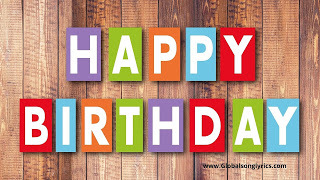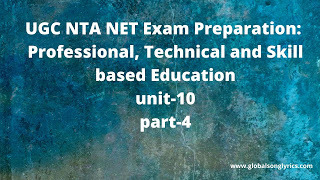Text
20+Valantine Images| Valentine Images 2021|
20+Valantine Images| Valentine Images 2021|












from Blogger https://ift.tt/3r6N7VZ
0 notes
Text
HAPPY BIRTHDAY IMAGES| 2021 HAPPY BIRTHDAY IMAGES| 10+ Happy Birthday Images |
HAPPY BIRTHDAY IMAGES| 2021 HAPPY BIRTHDAY IMAGES| 10+ Happy Birthday Images |




from Blogger https://ift.tt/2YboZ83
0 notes
Text
HAPPY BIRTHDAY IMAGES| 2021 HAPPY BIRTHDAY IMAGES| 10+ Happy Birthday Images |
HAPPY BIRTHDAY IMAGES| 2021 HAPPY BIRTHDAY IMAGES| 10+ Happy Birthday Images |




from Blogger https://ift.tt/2YboZ83
0 notes
Text
Pagal Nahi Hona |Sunanda Sharma | Sonu Sood | Jaani | Avvy Sra| B2gether |Sky
Pagal Nahi Hona |Sunanda Sharma | Sonu Sood | Jaani | Avvy Sra| B2gether |Sky
Pagal Nahi Hona Song Details:
Song: Pagal Nahi Hona
Singer: Sunanda Sharma
Lyrics: Jaani
Composer: Bpraak
Music: Avvy Sra
Label: Mad 4 Music
Pagal Nahi Hona Song Lyrics
Oo meinu pta mahobaat tu meinu ni karda,
meinu pta mahobbat tu meinu ni karda,
intzaar kra gi tera tu bhave ana ni,
ve main tere pishe yaara ani pagal aa,
ve mein tere pishe ani pagal ae,
ve pagal vi koi ana pagal hona ni,
ve mein tere pishe yaara mein ani pagal aa,
ve mein tere pishe yaara mein ani pagal aa,
oo meri gal sun aj meinu,
rona sune meinu mooraan daa,
asi tere aa diwaane jaani ve,
tu aa diwana hora da,
oo meri gal sun aj meinu,
rona sune meinu mooraan daa,
asi tere aa diwaane jaani ve,
tu aa diwana hora da,
oo meinu duniya ne samjaya si,
k vechaya hoya imaan tu,
bas shayari teri changi ae,
par change ni insaan tu,
oo mein ik na maani duniya di,
teri ho gayi ve,
ki pta si sachi tu seene naal lana ni,
ve main tere pishe yaara ani pagal aa,
ve mein tere pishe ani pagal ae,
ve pagal vi koi ana pagal hona ni,
kya hi jmana tha vo,
kya hi mulakaate thi,
kya hi thi shame vo,
kya hi vo raate thi,
ab tum shayad ho chuke ho aur ke,
jab tum mere the roj barsaate thi,
hun tu jinde naal vi zindgi jeena ve,
tenu soo meri onhu khde rvona ni,
ve main tere pishe yaara ani pagal aa,
ve mein tere pishe ani pagal ae,
ve pagal vi koi ana pagal hona ni,
Pagal Nahi Hona Song Music Video
youtube
from Blogger https://ift.tt/3p6CX6Z
0 notes
Text
Jack and Jill |Karan Sehmbi | Aveera Singh | King Ricky | Nakkulogic | Latest punjabi song 2020-2021|
Jack and Jill |Karan Sehmbi | Aveera Singh | King Ricky | Nakkulogic | Latest punjabi song 2020-2021|

jack n jill song
Jack n Jill Song Lyrics
oo mange mera dil,
kehndi kite mil,
lage mainu pyar wala phool riha khil
lak kare kil
tu holi holi hil
oo mange mera dil,
kehndi kite mil,
lage mainu pyar wala phool riha khil
lak kare kil
tu holi holi hil
zindg vich apni main kara shamil
oo mange mera dil,
kehndi kite mil,
lage mainu pyar wala phool riha khil
lak kare kil
tu holi holi hil
zindg vich apni main kara shamil
ho biba tere vargi duniya vich hor ni honi
tenu sare kehnde sohni
nena katil thodi utte til
methe utte chan tere karda ae chill
oo mange mera dil,
kehndi kite mil,
lage mainu pyar wala phool riha khil
lak kare kil
tu holi holi hil
zindg vich apni main kara shamil
ondi ik chup vich kiniya ne gallan
kehndi give me a sign tere pishe pishe chla
ondi ik chup vich kiniya ne gallan
kehndi give me a sign tere pishe pishe chla
on the world menu jchi koi na
sachi dekh ke kudi phli vaar oya main jlla
m jack te o jill bethe apa mil
oo bani defoodil
oo mange mera dil,
kehndi kite mil,
lage mainu pyar wala phool riha khil
lak kare kil
tu holi holi hil
zindg vich apni main kara shamil
marde ne dekhe onde kine hor ne
lutde ne dekhe age kine chor ne
lage kush magical ja hoya mere naal ae
just wanna see her everyday more main
main hoya kabil
ruke tere dream karu sare fill
oo mange mera dil,
kehndi kite mil,
lage mainu pyar wala phool riha khil
lak kare kil
tu holi holi hil
zindg vich apni main kara shamil
from Blogger https://ift.tt/3o0l7RJ
0 notes
Text
Toh Aagaye Hum Mithoon Feat Jubin Nautiyal| Sayeed Quadari | Ashish Panda | Bhushan Kumar
Toh Aagaye Hum Mithoon Feat Jubin Nautiyal| Sayeed Quadari | Ashish Panda | Bhushan Kumar
Toh Aagaye Hum Song Lyrics
Tu hi Zehan mei Shaam Savere
teri hi lab pe batt hai
Tu hi Zehan mei Shaam Savere
teri hi lab pe batt hai
tujhse mila hu
mai jis jaghah pe
ab woh jagaah bhi khaas hai
uski taraf hi le jaate hai
mujko ye mere kadam
to aa gaye hum
to aa gaye hum
to aa gaye hum
oo sanam
to aa gaye hum
to aa gaye hum
to aa gaye hum sanam
mujhe vha tu mil jaye
to mil jaye mere humdum
to aa gaye hum
to aa gaye hum
to aa gaye hum
oo sanam
uff teri kya baat hai
tujpe mai hu feeda
varna dil main kisi ko deta nhi bakhuda
tujse hi milne ko chahe dil ye mera humdum
to aa gaye hum
to aa gaye hum
to aa gaye hum
ooo sanam
to aa gaye hum
to aa gaye hum
to aa gaye hum oo sanam
dhoond ke bhi na mile koi bi teri trhaan
fir main kyu jaaya karu vakat apna bhallan
tere sang hi main gujaaru jeene ke har mausum
to aa gaye hum
to aa gaye hum
to aa gaye hum
oo sanam
to aa gaye hum
to aa gaye hum oo sanam
mujhe vha tu mil jaye
to mil jaye hum dum
to aa gaye hum
to aa gaye hum
to aa gaye hum
oo sanam
to aa gaye hum
to aa gaye hum
to aa gaye hum oo sanam
from Blogger https://ift.tt/2XEpzuY
0 notes
Text
UGC NTA NET:USES OF LANGUAGE |UNIT-6|PART-4|
UGC NTA NET:USES OF LANGUAGE |UNIT-6|PART-4|
Introduction
We use language in many different ways and for many different purpose.
The purpose of logic is to improve our critical thinking.
To think critically is to recognize, construct, analyze, and evaluate arguments
doing these things requires that we able to separate the argumentative uses of language from the other uses.
these categories are not mutually exclusive. A sentence may be used in more than one way on any given occasion.
Categories of use of language
the uses of language it is divided in 5 broad categories
1. the informative:
What we express, when using language informatively , can be judged true or false
we may not know which it is, but we know it is one or the other. for e.g., consider the sentence,"there are intelligent life forms on other planets". it may be the case that there are no life of any kind in any other galaxy.
Either way, it is an informative use of language because the sentence expresses something that is either true or false.
A sentence used informatively is usually, but not always, a declarative sentence.
if we wish not only to inform,but also to add emphasis to the information, we might use an exclamatory sentence.
A student might say to the teacher, "is it already noon?" the purpose is not to inquire, but to tell the teacher that it is time to stop for a lunch break.
The informative use of language itself has many uses. included are reports, descriptions, analyses, explanations and argument.
2. the evocating
when used evocatively,serves to bring about a response, usually from another person.
commands are one large group of evocative expressions.
if i use the sentence, "close the door", presumably there is an open door and someone present whom i want to close it. the sentence is used to evoke the action of door closing.
Questions, like commands, are an evocative use of language
The function of a question, in normal cases, is to elicit an answer
if your instructor asks"are you sure you've studied enough?" she probably is encouraging you to study more.
Feeling or emotions, as well as actions, may be evoked by language.
one of the things we must be cautious of is language that pretends to be informative, but is actually evocative.
3. the expressive:
The expressive use of language is best characterized by its lack of other directedness.
we can express our joy, sadness, or pain privately or publicly. expressions such as "oh, " "wow", and "ouch" curses and cheers are typical of the expressive use.
because we are social beings, and language is a primary vehicle of our social interaction, it is frequently the case that language is simultaneously used to express and evoke.
we have empathy with others. when they express joy through laughter, we laugh with them. when they cry, we cry with them.
4. the evaluative
language is used evaluatively to express ethical, aesthetic, or functional judgments.
terms like "good,"bad","right", "wrong"'"beautiful", "ugly", "efficient", and "inefficient" are clues to the evaluative use of language.
Evaluative language falls into three major areas:
ethical,aesthetic and technical.
Ethical language is about right and wrong, duties and obligations, rights and responsibilities.
Aesthetic language is about beauty and ugliness, the pleasing and displeasing
technical language is about what is useful and useless, efficient and inefficient, functional and dis functional.
5. the performative
A performative expression is one used to accomplish some social act in contrast to reporting, evaluating, provoking, or reacting to it.
to say, "i apologize for my offensive behaviour", is to apologize for that behaviour.
it i not to report an act, which has been performed or will be performed. it is the performance of apologizing.
both the recognition and the execution of performatives require knowledge of social roles and actions.
voting is done by citizens or by members of organization.
promises are generally binding only on those who make them.
from Blogger https://ift.tt/3os7tIi
0 notes
Text
UGC NTA TET Exam Preparation: Classical square of opposition|Unit-6|Part-3|
UGC NTA TET Exam Preparation: Classical square of opposition|Unit-6|Part-3|
from Blogger https://ift.tt/2MNQ0MB
0 notes
Text
UGC NTA NET Exam Preparation : Connotations and Denotations|Unit-6|part-2|
UGC NTA NET Exam Preparation : Connotations and Denotations|Unit-6|part-2|
Words are not limited to one single meaning. most of the words do have multiple meanings, which are either categorize as denotative or connotative.
The Denotations of a word it its explicit definitions as listed in a dictionary. e.g., the denotative meaning of home is 'a place where one lives, a 'residence'.
The expressiveness of a language, however, comes from the other type of word meaning.
Connotations is a set of association that a word usually brings to mind. the connotative meaning of home is a place of security, comfort and family.
the quote 'east or west, home is the best'
Facts, opinions, belief and prejudice
1. Facts: a fact is a verifiable. we can determine whether it is true by researching the evidence.
the facts are as follows:
Things known for certain to have happened.
Things known for certain to be true.
things known for certain to be exist
e.g., 1. newton is the law of gravity
e.g. 2 india got independence on 15th august 1947
2. opinions: an opinion is a judgement based on facts, an honest attempt to draw a reasonable conclusion from factual evidence
opinions are as follow:
Things believed to be happened
Things believe to be true
things believe to be true
3. Prejudice: a half baked opinion based on insufficient evidence
unlike a belief, a prejudice is testable, it can be contested and disapproved on the basis of facts.
4. Belief: a belief is conviction based on cultural or personal faith, morality or values.
belief are inarguable, they can not serve as the thesis of a formal argument.
from Blogger https://ift.tt/3hRGcMZ
0 notes
Text
UGC NET NTA Exam Preparation: Arguments and its Forms|Unit-6|Part-2|
UGC NET NTA Exam Preparation: Arguments and its Forms|Unit-6|Part-2|
from Blogger https://ift.tt/3qama3h
0 notes
Text
UGC NET NTA Exam Preparation:Data Interpretation|Unit-7|Part-1|
UGC NET NTA Exam Preparation:Data Interpretation |Unit-7|Part-1|
Data:
Information in raw or unorganised form (such as alphabets, numbers, or symbols) that refers to or represent conditions, ideas or object. for e.g., marks of students in a class, temperature of various places in the country etc is called 'Data'
Data Acquisition:
data acquisition is the process of gathering and measuring information on targeted or desired variables, which enables one to evaluate outcomes and answer relevant questions. it is a component of research in all fields of study including physical and social sciences, humanities and business.
The goal for all data collection is to capture quality evidence that allows analysis which lead to the formulation of convincing and credible answers to the questions that have been posed.
a formal data acquisition process is necessary as it ensures that the data gathered are both defined and accurate and that subsequent decisions based on arguments present in the findings are valid.
Sources of data:
normally we can gather data from 2 sources namely primary and secondary
1. Primary data source: primary data is the data that you gather considering your analysis needs. the source of primary data is a population place from which you gather information in the form of questionnaire focusing on targeted size and kind of sample.
2. Secondary data source: secondary data is the data acquired from optional sources like magazines, books, documents,journals,reports, the web and more.
Classification of data:
1. Qualitative data:
This type of data is basically descriptive in nature and a bit difficult to analyse. this type of data can be classified into categories, on the basis of physical attributes and properties of the object. it is concerned with the data that is observable in term of small, appearance,taste,feel,texture,gender etc. the method of collecting qualitative data are
1. Focus group
2. Observation
3. Interview
2. Quantitative data:
This type of data basically deals with quantity or numbers. if refers to the data which computes the values and can express it in numerical terms. it can be used in computation and statistical test. it is concerned with measurements like height, weight, volume, length, size etc. the methods of collecting quantitative data
1. surveys
2. Experiments
3. Observations and interview
Data mapping:
data mapping is defined as the relationship between two data systems. data mapping connects two different types of data models together. it is a process of finding out as how an application or database connects to another application or database.
for e.g., suppose there are 2 different databases, out of which one contains the list of names of persons in an organisation and other contains the list of their phone numbers. now, if we wish to connect both of the lists together, we will take the help of data mapping applications or software.
Data mapping Task
All the tasks under data mapping fall into 2 categories. these are
1. Data Migration
2. Data Integration
Data mapping S/W
Data Governance
Importance of Data Governance
Tools of Data Governance
Data interpretation
from Blogger https://ift.tt/38mxpj2
0 notes
Text
UGC NTA NET Exam Preparation: Types of Reasoning|unit-5| Part-1|
UGC NTA NET Exam Preparation: Types of Reasoning|unit-5| Part-1|
Reasoning:
it is the process of thinking in a logical way in order to form the conclusion or judgement from an information. it basically test one's ability to judge things when in a complete situation. it analyses a student's ability to picturise data and rearrange it to reach to a solution. from a student's perspective, reasoning as a subject does not require any formal learning of specific rules, but an exposure to find your own way to handle tricky questions.
Types of Reasoning:
conventionally there are three important domains of reasoning
1. Non-verbal Reasoning:
The term 'non verbal' indicates 'does not involve any language'. non-verbal reasoning is a test involves ability to understand, interpret and analyse the visual data and solve problems using visual reasoning. the questions in non-verbal appear in diagrammatic or pictorial form. it involves identifying relationship finding series, image analysis, finding similarities and difference b/w shapes and patterns it also includes question based on paper folding, cubes, and dice, mirror and water image, figure matrix, dot analysis,grouping of images etc.
2. Verbal Reasoning:
it is the ability to understand and logically work through concepts and problems expressed in words. it includes question based on analogy, classification, direction sense test, blood relation etc. it requires logical reasoning, a reasonable knowledge of English language and advanced knowledge of maths.
3. Logical Reasoning: it is the process of deriving a logical inference from a hypothesis through reasoning. it tests one's reading and understanding abilities. one should be able to draw reasonable conclusions from sentences and paragraphs. it involves interpreting sentences, deriving conclusions from passages, extracting logics from statements, deriving courses of action from statements, arguments, assumptions and conclusions from the given statements.
from Blogger https://ift.tt/2MIoIaj
0 notes
Text
UGC NTA NET Exam Preparation: Policies, Governance and Administration|unit-10|part-6|
UGC NTA NET Exam Preparation: Policies, Governance and Administration|unit-10|part-6|
There are different policies on education which are given below:
National Policy on Education (NPE), 1968:
The NPE is based on the recommendations of the kothari commision (1964-66). however, in 1967 the government constituted a committee of members of parliament on education, popularly known as sapru committee to prepare the draft of a statement on the national policy on education (NPE).
The draft prepared by the committee was considered and approved by the CABE. it was on this basis that the GOI announced the NPE 1968.
Following are the main features of NPE
It emphasised the need for raising the standards of education at all levels.
it suggested the new universities to be established only after proper planning and provisions of adequate funds.
it emphasised on strengthening of post-graduate teaching and research as well as of centres of advanced study.
National Policy on Education, 1986:
The new national policy on education was announced in may 1986. it comprises 12 parts and discussed in detail the essential characteristics of a national system of education.
the recommendations are
it provides for a common educational structure like 10+2+3
it suggested strengthening of adult education, vocational education, gradual replacement of affiliating system by autonomous colleges, setting up of open university and rural university system and fortifying technical and management education.
National Education Policy 1992 (NPE, 1992):
The NPE-1986 was modified by the then prime ministerManmohan singh and P.V narasimha Rao government in 1992. it was adopted in 2005 which was recognised as "common minimum programme"
salient features of NPE, 1992 are as follows:
it implemented all india bases common entrance examination for admission in all professional and technical programmes in india.
the indian government laid down a three-exam scheme for admission to engineering and architecture/planning programmes such as :JEE, AIEEE at national level and SLEEE state level engineering entrance examinations.
In this policy state level institutions have option to join AIEEE.
National Education Policy, 2016
The draft of national education policy (NEP) 2016 was released by the MHRD. the focus of the policy is to address gender discrimination, the creation of educational tribunals, and a common curriculum for science, mathematics and english.
The salient features of NEP-2016 regarding HE are as follows
At the national level, a teacher education university will be set up covering various aspects of teacher education and faculty development.
keeping in view special importance of sanskrit to the growth and development of india languages and its unique contribution to the cultural unity of the country, facilities for teaching sanskrit at the school and university stages will be offered on more liberal scale.
an independent mechanism for administering the national HE fellowship programme will be put in place.
An expert committee will be constituted to study the system of accreditation which will suggest restructuring of NAAC and NAB as well as redefining methodologies, parameters and criteria.
A quality assurance mechanism for accreditation of all universities/institution offering ODL/MOOCS will be put in place to ensure quality, promote innovation and reshape and modernise the ODL/MOOCS courses and programmes.
A task force of experts will be set up to study the recruitment, promotion and retension procedures, followed by internationally renowned universities and institutions and suggest measures to promote intellectual and academic excellence in HE institutions (HEIs)
A national camping will be launched to attract young talent into the teaching profession. therefore, a career growth in professional courses such as M.phil, Ph.D will be created.
A clear reorientation of research agenda of national university of educational planning and administration (NUEPA) will be undertaken to reflect actual issues on the ground.
The government will take steps for reaching the long pending goal of raising the investment in education sector to at least 6% of GDP as a priority.
In order to encourage excellence and efficiency performance linked funding of HE institutions (HEIs) will be implemented
in Order to promote innovation, creativity and entrepreneurship, 100 more incubation centres will be established in HE over a period of next 5 years.
National Governance and Administration:
Education is listed in the concurrent list of seventh schedule of the indian constitution. thus, both the centre and state can make legislation on it. if there is any dispute occurred the upper hand goes to the centre.
1. Central government- the government of india has controlled the education through following functions
It lays down the national policy on education
it provides grants to UGC
it establishes central universities and institutions of national importance.
it declares an educational institution as deemed university on the recommendation of the UGC.
2. State Government--- the state government has performed following functions
many states have also set up state council and advisory boards to provide guidelines for proper functioning of HE institutions in the states.
these state council coordinate the role of government universities and apex regulatory agencies for HE within the state.
3. Central Advisory board of education (CABE):
it is the highest advisory body to advise the central and state governments in the field of education. it was established in 1920 and its present form is continued from 1994.
it plays a pivotal role in reviewing educational development, determining the changes required to improve the system and monitoring the implementation.
Ministry of Human Resource Development, MHRD:
MHRD was created on 26th September, 1985, through the 174th amendment to the government of india (allocation of business) rule, 1961.
currently, the MHRD works through two departments
1. Department of school education and literacy.
2. Department of HE
Objectives of MHRD
Formulating the national policy on education and to ensure that it is implemented in letter and spirit.
planned development including expanding access and improving quality of the educational institutions throughout the country, including the regions where people do not have easy access to education.
paying special attention to disadvantages groups like poor, females and the minorities.
provide financial help in the form of scholarships, loan, subsidy, etc to deserving students from deprived sections of the society.
encouraging international cooperation in the field of education, including working closely with the UNESCO and foreign governments as well as universities to enhance the educational opportunities in the country.
from Blogger https://ift.tt/3hPq1j6
0 notes
Text
UGC NTA NET Exam Preparation: Value and Environment Education|Unit-10|Part-5|
UGC NTA NET Exam Preparation: Value and Environment Education|Unit-10|Part-5|
Value Education:
Value education is the process by which people give moral values to each other. according to CV good, Value education is the aggregate of all the process by means of which a person develops ability and other form of behaviour of the positive values in the society in which he lives.
Need for Imparting Value Education
The need for imparting value education in india arises because
Developing societies like india face a conflict b/w tradition and modernisation.
Globalisation has made societies more complex and less homogeneity.
india is a multi-lingual , multi-cultural and multi-religious country.
To make a society truly inclusive.
To make children sensitive to the environment
To encourage greater expositions in the field of science and technology.
To realise value that are enshrined in our constitution such as justice, liberty, equality and fundamental duties.
Objective of Value Education:
To improve the integral growth of human beings.
To create attitudes and improvement towards sustainable lifestyle.
To increase awareness about our national history, our cultural heritage, constitutional rights,national integration, community development and environment.
To create and develop awareness about the value and their significant and role.
To know about various living and non-living organisms and their interaction with environment.
developing tolerance towards various religions and promoting understanding of different religious faith.
Activities or programmes ate to be added in a holistic frame at university level such as yoga education, wellness etc.
Types of Values Introduced in the Colleges
Human value: it means what is enriching and good for individuals. these are practiced by individuals alone, irrespective of his/her social relationship.it is mentored by senior faculty members
Community or Social values: it implies what is good for the society. these values discuss the basis of the relationship of an individual with other people.
Cultural values: it means involvement and survival of the culture. the practice of such values is very essential for the growth and survival of any culture.
Institutional Values: It includes political and moral values.
Key Development in value education
An awareness for the inculcation of right values in india have been grown independence. thus, some of the important development in value education have been elaborated below:
from Blogger https://ift.tt/3nl5mES
0 notes
Text
UGC NTA NET Exam Preparation: Professional, Technical and Skill based Education|unit-10|part-4|
UGC NTA NET Exam Preparation: Professional, Technical and Skill based Education|unit-10|part-4|

Professional Education:
professional program is a program that develops individuals to acquire special competencies for professional practice and develop skills in youths. it includes all those educational courses which provide training for livelihood. professional education is the component of technical education programme.
The aim of this education system is to enable youths to get employment in government and non-government sectors after getting degree or diploma.
professional education includes curriculum based on banking, media,management,tourism, teaching, aviation etc. these curriculum enable youths to get opportunity of jobs in different sectors like auditing, editing, hotel management, finance management, managers and so on. this education system enable students to become responsible for their life.
important professional courses are BBA, MBA, MCA in management, mass communication/journalism master's in data analytics, B.ED, M.Ed, hospitality, global marketing management, and air hostess courses and so on.
Indian institute of Management(IIM):
IIMs are a group of 20 public, autonomous institute of management education and research in india. they primarily offer post graduate, doctoral and executive education programmes. the establishment of IIMs was initiated by jawaharlal nehru. They are registered as societies under the indian societies registration act.
There are 20IIMs located in different regions of indian states/UTs.
indian institute of management, calcutta was the first IIM to be set up on 13th november 1961 and soon later in ahmedabad on 16th december 1961.
Technical Education:
Technical education has a very important role in the development of human resource for the country. it creates skilled manpower, enhances industrial productivity and improves the quality of life of people. this education covers programmes in engineering and technology.
centres of technical training can be seen from the british period when first engineering college was established in the uttar pradesh in 1847 for the training of civil engineers at Roorkee. it is now located in uttarakhand. the indian institute of sciene was established in 1909 in order to provide research work and education in the field of engineering and science.
The first degree classes were started in university of banaras in 1917, which provided degrees in different disciplines like mechanical engineering, electrical engineering and metallurgy, which was founded by pt. madan mohan malaviya,
in order to promote technical education and to establish norms for this education, the GOI established the All india council for technical education (AICTE) in 1945. its headquarters is in ew delhi and seven regional offices located at kolkata, chennai, kanpur, mumbai, chandigarh, bhopal, and bangalore.
important technical courses are like B.Tech course (e.g. computer science and engineering, information technology, electronics and communication engineering, electrical engineering, mechanical engineering, civil engineering, petroleum engineering, chemical engineering, aerospace engineering, industrial engineering, Aeronautical engineering), M.Tech (e.g software engineering, distributed computing, advanced computing, power systems, instrumentation & control system, micro electronics, thermal engineering, computer aided design and manufacturing, mechatronics engineering, hydraulic and water, resources engineering, chemical plant design, chemical process design, aerodynamics, biomedical engineering), M.Arch, surveyor training course and so on. there are many institutions which promote technical education in india.
Indian Institute of Technology (IIT):
IIT are apex institutions by engineering education and research. they are governed by the institutes of technology act 1961 which has declared them as institutions of national importance and lays down their powers, duties and framework for governance.
The first IIT was set up in kharagpur in 1951 an soon later in bombay (1958), madras (1959), kanpur(1959) and delhi (1963). the university of roorkee was converted to IIT Roorkee in 2001.
National Institute of Technology (NIT):
NIT are autonomous public institutes for science and engneering education. they are governed by the national institutes for technology act, 2007, which declared them as institutions of national importance. the first NIT was established at Allahabad in 2001. gradually the no. has increased to 31.
Indian institute of information technology (IIIT):
These are a group of institutes of HE and focused on information technology. The IIIT s at Gwalior, Allahabad, Jabalpur and Kancheeppuram were set up by the ministry of human resource development (MHRD).
Besides the government funded IITs, in 2010 the union cabinet approved a scheme for setting up twenty more IIITs, based on the public-private partnership (PPP) model, funded by the central government, state government and industry partners in the ratio 50:35:15. There are 3 IIITs located at different places in indian states.
National Institute of Technical Teacher's Training and Research(NITTTRS)
It was established as an autonomous institute by ministry of human resource development to improve the quality of engineering education system in india. it is located at bhopal, chandigarh, chennai, and kolkata.
it also fosters research in the inter-disciplinary area of engineering education and offers consultancy and extension services for the total development of engineering colleges, polytechnic college, vocational institutions, industry, service sector and the community at large.
Skill Based Education:
This type of education includes such courses which provide training and skills in different disciplines. duration of these courses can be from 6 months to 2 years. the main objective of this education is to develop skills in students and enable them to achieve a suitable carrier option in life. skill based courses are fashion designing, tourism, food processing, garment technology, s/w development, hospitality management and IIT courses like carpenter, cutting, technology technician, electrician, photography, embroidery needle work, health sanitary inspector and so on.
Industrial Training Institute(ITI):
These are post-secondary schools which provide skill education and training to students. these are constituted by directorate general of employment and training (DGET), ministry of skill development and entrepreneurship, indian government. after completion of the training, trainees/students have to pass the all india trade test (AITT) and they then get the national trade certificate (NTC).
As on April, 2016 there are around 13105 ITIs, out of these, the no. of government ITIs are 2293, while the private ITIs are 10812.
from Blogger https://ift.tt/35fgUTM
0 notes
Text
UGC NTA NET Exam Preparation: Oriental, Conventional and non-conventional learning programmes in India|Unit-10|part-3|
UGC NTA NET Exam Preparation: Oriental, Conventional and non-conventional learning programmes in India|Unit-10|part-3|

Oriental, conventional and non-conventional learning programmes are designed to provide education and skills to youth population and prepare them for employment.these learning programmes are discussed below:
Oriental Learning Programmes in India
These programmes are of short duration such as 6 months to 1 years which provide skills to youths and prepare them for employment. these programmes include such courses in which modern and advanced techniques are used which are based on employment generation. for e.g., data entry operator, web designing, beautician, search engine optimization and so on. these Programmes also include such courses which are based n foreign language like french, German, portuguese, etc through which one get better opportunities for employment.
Characteristics of Oriental Learning Programmes:
These learning courses can be opted after 12th or graduation level of education.
these are employment oriented programmes.
these provide better opportunities of employment in both in the country and foreign countries.
These courses are easy to learn and that too in very short duration.
Note in 2015 pradhan mantri kaushal vikas yojana (PMKVT) was launched by GOI in all states of the country. under this programme the ministry of skill development and entrepreneurship is providing oriental courses to students who have passed 12th level. it is also providing employment to these youths.
Conventional Learning Programmes in India:
These learning programmes include all those course which are imparted in colleges and universities. in these programmes such courses are opted which are carrier and employment oriented and provide education along with intellectual skills. for e.g. Graduation, M.B.A, LL.B and so on
Characteristics of Conventional Learning Programmes:
These programmes include all the objectives of education like knowledge, comprehension and opportunities for employment.
in these programmes the main emphasis is given on progressive education.
in these programmes learning is based on holistic view, self control, self-realisation and cultural values.
although through these courses chances of employment are adequate but take a long time to be accomplished.
Non-Conventional Learning Programmes:
Non-conventional learning programmes in india are different from conventional learning programmes. under this programme teaching programmes are done in the form of online education (E-Learning), open and distance education,etc.
these programmes include both advanced method complex learning aspects through which learning becomes more effective for learners. these teaching methods can be correspondence education, open schools and so on. these also include online mode and optional courses. these programmes fulfill the demand of modern society and encourage employment oriented learning. these include professional and technical programmes.
Characteristics of Non-Conventional Learning Programmes:
The main emphasis of these programmes is to make learning simple and easy for youths.
these programmes are based on complex aspects which fulfill the demand of employment oriented courses.
these programmes enable students to be entrepreneurs or establish their own business.
from Blogger https://ift.tt/3bdeHvL
0 notes
Text
UGC NTA NET Exam Preparation: Evolution of Higher Learning and Research in Post -Independence Period |unit-10|part-2|
UGC NTA NET Exam Preparation: Evolution of Higher Learning and Research in Post -Independence Period |unit-10|part-2|
After attaining independence in 1947, the main task of the government of india was to have a rapid socio-economic development and reconstruction of indian society. the government realised and recognised the important role of education in achieving its objective. The development of higher education after independence can be traced through the following commissions and committees.
1. Radha Krishnan Commission, 1948
2. Mudaliar Commission, 1952
3. Kothari Education Commision, 1964-66
4. Gnanam Committee,1993
5. Sam Pitroda Committee. 2005
6. Yashpal Committee, 2008
7. Sharma Commitee
8. Dr Anil Kakodkar Committee,2009
9. KB pawar Commitee, 2012
10. Subramanian Committee on New EducationPolicy, 2016
11. Famous Research Councils
from Blogger https://ift.tt/3niimLe
0 notes